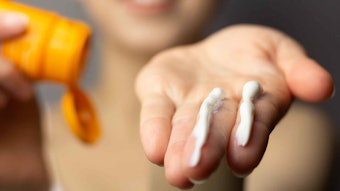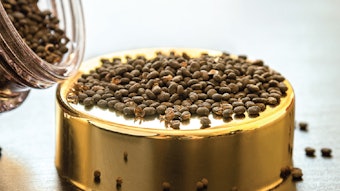
Titanium dioxide (TiO2) is becoming the UV filter of choice for many formulators due to its exceptional mildness and safety, and its inherent broad-spectrum UV protection profile. Consumers are attracted to it due to its natural appeal as a mineral UV filter.
TiO2 can be used as either a dry powder or a pre-dispersion in various carrier media. Dispersions are typically comprised of the TiO2 powder in a coated form, an optimized dispersant system and the carrier medium. The dispersion form has become increasingly popular, as high quality dispersions offer users several advantages over powders:
• Safe and easy to handle
• Consistent quality
• Easy to incorporate in the formulation
• Consistent performance
Safe and Easy to Handle
In 2010, the International Agency for Research on Cancer found that industrial exposure to TiO2 powder presents a risk and labeled it as a possible carcinogen. It is important to recognize that this is due to its physical form as a dust rather than its chemistry. Companies using TiO2 powder must therefore take special measures to protect their workforces from exposure due to inhalation, usually requiring specialist personal protective equipment, investment in extraction and the consideration of liability risks. However, these issues are neatly avoided by using TiO2 in a pre-dispersed form (see Figure 1), as the product is delivered in a safe and easy-to-handle liquid form, free from inhalation risks.
Easy to Incorporate in the Formulation
Powders agglomerate and hence require more time and greater energy input to adequately disperse in formulations, leading to higher product costs and longer batch times. They also may require additional dispersing agents to ensure they can be readily incorporated into the emulsion system. Dispersions are generally either pourable liquids or thixotropic gels that are shear thinning, meaning they can be easily mixed into the emulsion either before or after emulsification.
Consistent Quality
Dispersions must be carefully designed to ensure the TiO2 particles do not sediment during storage over time, making it vital to maintain a homogenous dispersion of particles throughout the product’s shelf life and during manufacture. At Croda, our extensive expertise in dispersion design and manufacture means our dispersions have a long shelf life, typically six years, giving customers peace of mind in terms of quality and reliability.
Consistent Performance
A further advantage of using a good quality, stabilized pre-dispersion is the long-term stability of SPF in the final formulation. With powders, there is a risk that the particles may re-agglomerate during the shelf life of the final product, leading to a reduction in SPF and all the associated health and reputational risks that this can bring. Figure 2: In vitro SPF measurements of Croda dispersions and powder grades of TiO2 shows the SPF data measured initially and after three months for a series of O/W emulsions containing oil-dispersed TiO2 at 5% solids. The emulsions were all subjected to freeze-thaw testing. In addition to improved initial SPF, the three emulsions with Croda dispersions maintained their SPF during this time (within experimental error); however, those made with powders showed a decrease in SPF, in some cases by as much as 50%.
For more information on Croda’s TiO2 dispersions, please visitwww.croda.com/europe/pc and search for Solaveil™ or Tioveil™.
Disclaimer:
The above paid-for content was produced by and posted on behalf of the Sponsor. Content provided is generated solely by the Sponsor or its affiliates, and it is the Sponsor’s responsibility for the accuracy, completeness and validity of all information included. Cosmetics & Toiletries takes steps to ensure that you will not confuse sponsored content with content produced by Cosmetics & Toiletries and governed by its editorial policy.










